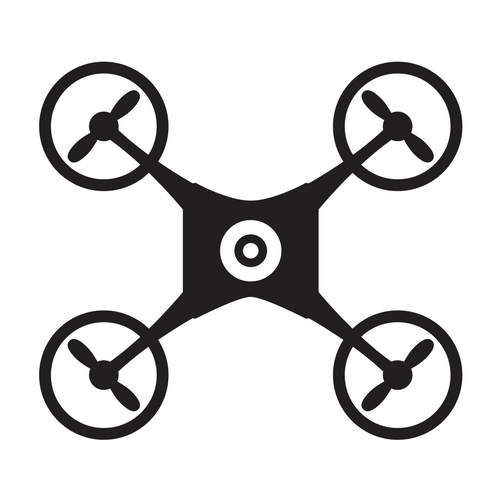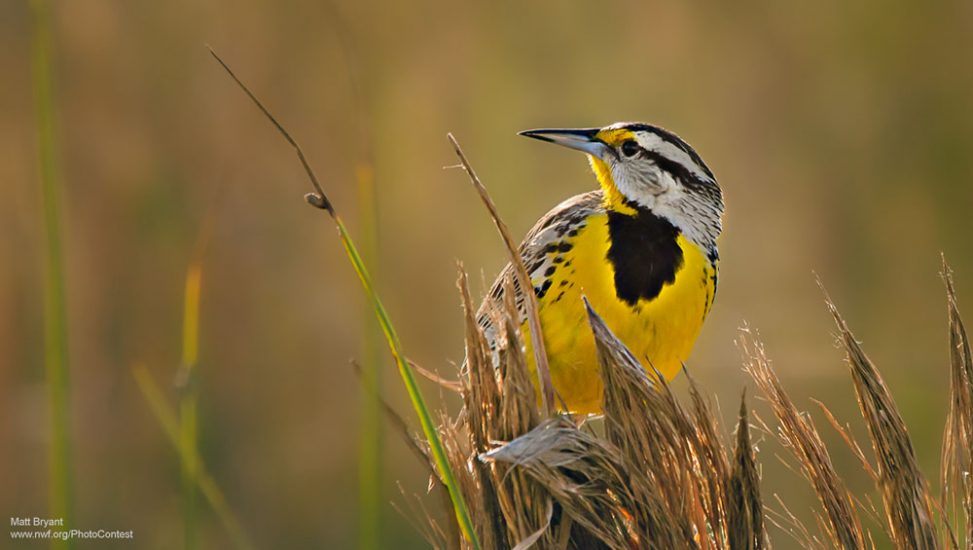The sun rises over Virginia’s Piedmont Region, golden rays glinting off of churning rapids. The buds of a dogwood tree shyly welcome the onset of spring, presenting soft pink and white flowers to salute the morning. Birdsong ripples through the air: the rhythmic trill of the Loggerhead Shrike, the clear whistle of the Eastern Meadowlark, the staccato buzz of the Grasshopper Sparrow. A shrewd onlooker stands motionless within the tall grasses, eyes scanning the horizon for the characteristic black “V” stamped on the yellow chest of a male Eastern Meadowlark (Figure 1).
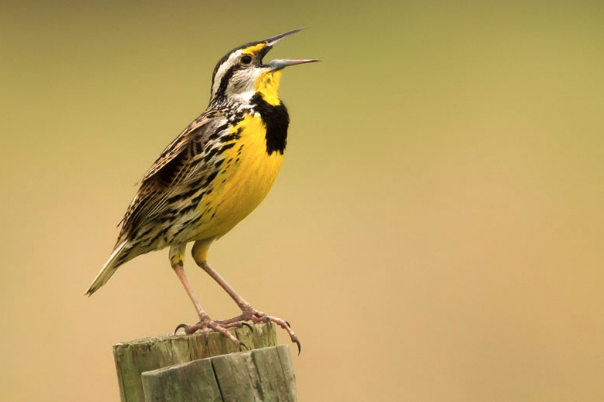
Figure 1. A male Eastern Meadowlark, identifiable by his bright yellow plumage and characteristic black “V” upon his chest.
Unbeknownst to the spectator, a nearby female Eastern Meadowlark sits upon her nest, protectively guarding her clutch. The silent observer moves past the nest, a domed structure woven from dense grasses (Figure 2).
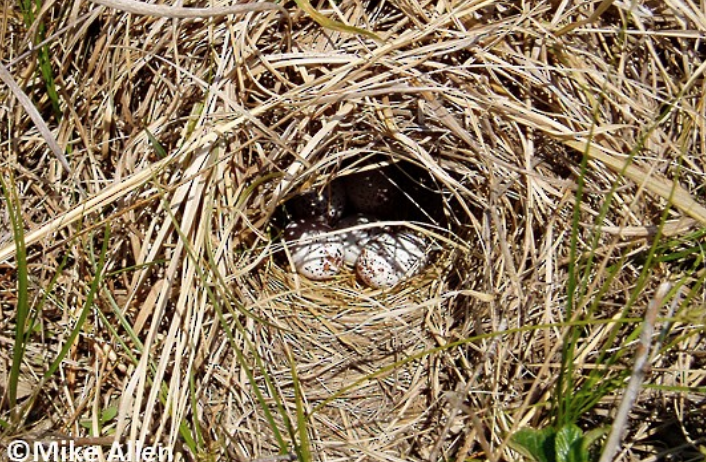
Figure 2. A nest made by Eastern Meadowlarks to house their eggs, characterized by its dome structure and thick, woven grasses.
The female Eastern Meadowlark, and other species of grassland birds throughout the Piedmont Region and the United States, devote themselves to ensuring that their offspring have the opportunity to fly beyond their nests. However, nests within obscuring grasses often fall victim to common agricultural practices, including haying and mowing, during the breeding season and large-scale agricultural development (Sauer, 2017). While native grasslands once blanketed the United States, more than 95% of the tallgrass prairie has been converted to serve a variety of purposes, from agricultural land to other land uses. Activities threatening grassland areas jeopardize the ability of grassland birds to nest, resulting in significant population declines. Fifty percent of grassland bird species within the Eastern United States experienced significant population decline between 2005-2015 (Sauer, 2017). For example, Eastern and Western Meadowlarks, Bobolinks, Short-eared Owls, and Northern Bobwhites have declined by 38-77% in the decades following 1968 (“Grasslands,” 2009).
As 42 grassland bird species dependent upon grasslands for breeding, nesting, and habitation dwindle within the United States, avid bird-watchers may hang up their binoculars in resignation. The bird watching industry, which generated $107 billion in total industry revenue in 2011 and employed more than 666,000 people within the United States, may stagnate, resulting in a deflation of the national Gross Domestic Product (GDP) and employment rate (“Grasslands,” 2009). As birders’ binoculars gather dust, agriculturalists may find themselves investing more money and time into managing pests: a single pair of Savannah Sparrows can consume more than five kilograms of insects over the span of one breeding season. Downstream impacts of additional pesticide application involve the growth of toxic algal blooms and oxygen depletion of freshwater sources.
Current methods to locate grassland bird nests within fields and inform landowners of conservation-conscious land management practices are resource intensive and invasive. While four grassland bird species are federally listed as endangered, including the Northern Aplomado Falcon, Attwater’s Greater Prairie-Chicken, the Masked Northern Bobwhite, and the Florida Grasshopper Sparrow, landowners may be unaware of the presence of grassland birds upon their property. Surveying 20 acres of land may require an hour of time, while fields may exceed hundreds of acres. Well-intentioned surveyors may inadvertently guide predators, such as foxes, to nests via scent trails.
In an effort to efficiently and non-invasively locate grassland bird nests within fields, the Smithsonian Conservation Biology Institute (SCBI) partnered with James Madison University students enrolled in a course focusing upon utilizing unmanned aerial vehicles (UAV) to address pressing ecological and biological problems. SCBI and #TeamGrasslandBirds worked collaboratively to outfit a UAV with a thermal camera, capturing the heat signatures of mock nests within fields. Geotagged images will provide a reference to researchers, empowering them to inform landowners of conservation-oriented land management practices. Figure 3 depicts three members of the team captured upon a GoPro during an initial testing session.
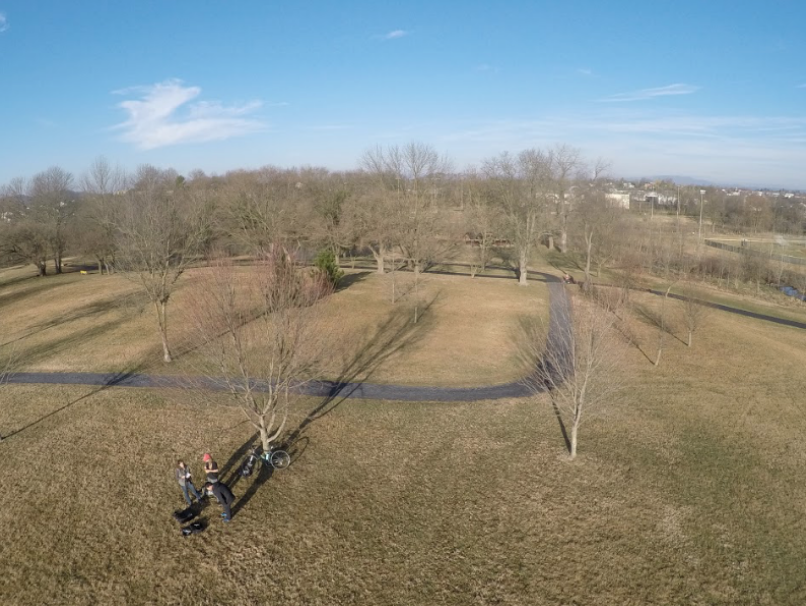
Figure 3. A photograph of Purcell Park captured upon the GoPro, mounted to a 3DR drone. Team members pictured within this image include Kevin Levin, Sally Todd, and Kristen Grimshaw.
As spring settles upon Virginia’s Piedmont Region, the cacophonous medley of grassland birds will soon be joined by the whirring sound of a drone’s propellers. While the jarring robotic sound may clash with the melodious notes of nature’s winged chorus, it may prove essential to the conservation of grassland birds throughout the region, the United States, and the world.
